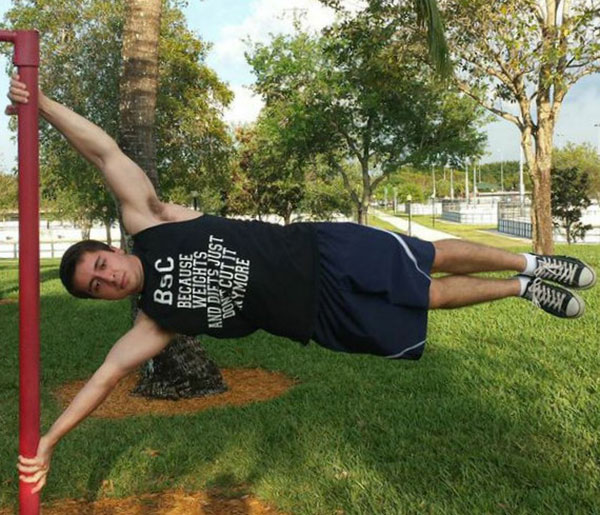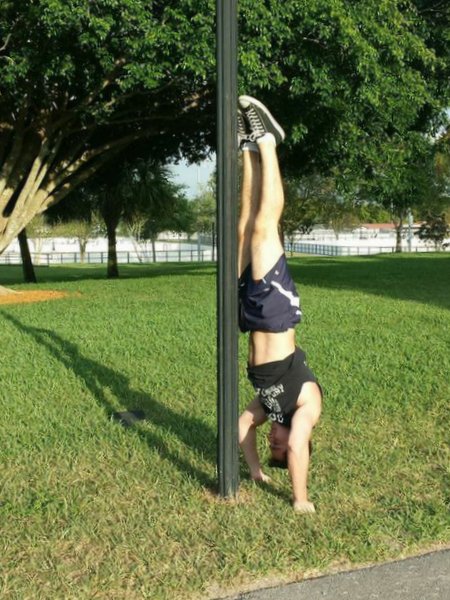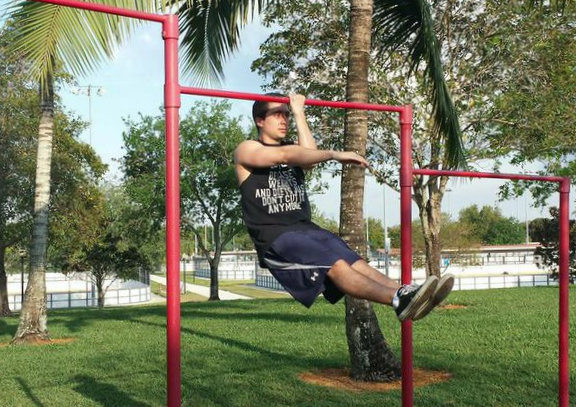
Though progressive calisthenics training brings plenty of benefits, ranging from increased flexibility, control, and of course, strength, your body perceives it as a stress. As such, the body builds resistance toward it, which manifests in you getting stronger. Twenty push-ups today might force an adaptation, but twenty push-ups a month later might not.
One way to continue getting stronger on a consistent basis is to pick harder exercises as time goes by (you could begin with band-assisted pull-ups, then full pull-ups, then clapping pull-ups, etc), or by adding reps to your sets (do 3 sets of 30 squats today, 3 sets of 32 next time, etc). Most calisthenics trainers will recommend these two main variables in order to make their workouts harder and induce an adaptation.
At some point, however, our recovery cannot keep up with our want for reps or added difficulty. We’ve all been there: you were supposed to do 15 hanging leg raises today (couple more than last time), but you just could not go past 12. So what do you do?
If you can’t make the reps in one set, I propose simply adding more sets. Look at this cycle:

This is actually a personal example of a 7-week cycle I did with one-arm push-ups. I was only able to manage 3 reps in one set before week 1. Clearly, with such a hard exercise, doing 3 sets and adding reps on a weekly basis would burn me out incredibly fast. So instead, I chose sets of one less rep (sets of 2 reps), and did more and more sets each session! By the time week 3 rolls, doing sets of 3 is actually quite easy (you’ve gotten very strong after a 9 sets of 2!), so you cut the sets down, and begin doing sets of 3. Then add more sets. Repeat as necessary. Deload when you’re feeling fatigued.
I’ve actually started using this template for many of my exercises, and with amazing results! In 6 weeks, I was able to move my handstand push-ups from 4 rep-max (RM) to a 7 RM. For those math geeks out there (like myself), consider a 4RM is about 90% of a 1RM while a 7 RM is close to 82% of a 1RM. So the ratio of your new 1RM to your old 1 RM is of 0.9/0.82 = 1.10. You could say this is akin to boosting your 1RM in a barbell lift by 10% in a measly 6 weeks!

I obtained a similar result by making my 3RM with one-arm pushups into a 6 RM in 7 weeks. I attribute these exceptional improvements to two main things. First, every session is somehow a bit harder than the one before. (As I mentioned before, your body sees training as a stress. In order to cause strength gains on a weekly basis, you need to train hard, rest well, and make the next session a bit harder somehow.)
Second, because I expect to build up to high volume with many sets, my choice of reps-per-set is conservative at the beginning. So for the first four weeks or so of these cycles, I stay away from failure and really get to concentrate on tension, technique and form. When the cycle gets tough and your sets are much closer to failure, you’ll find strength coming out of nowhere because you built up this foundation at the beginning of the cycle.
Once you’re satisfied with your max, switch to a harder exercise. This is a vital part of progressive calisthenics!

Note that the idea of adding sets instead of reps in order to get stronger is incredibly flexible. It is more suited towards max-strength exercises (one where you could perform 3-8 RMs) since adding reps on a weekly basis to the sets can be quite difficult when the exercise is so tough. But it certainly does not have to be twice a week as I’ve chosen to do. A routine that works an exercise 3-4 times a week would also work well. Here, you might prefer to just do 1 more set than the session before until you feel confident enough to increase the amount of reps on each set. Then you’d decrease the sets, do sets of more reps, and build back up.
To the beginner student of calisthenics, it is certainly advisable to stick to a few sets, concentrate on form, add reps, and switch to a harder exercise once you’ve squeezed all the strength gains possible from your previous exercise. However, the more seasoned calisthenics enthusiast might need one more tool in order to burst through plateaus. I’ve certainly needed it myself when I find my reps just won’t climb no matter how hard I push. At that point, manipulating the amount of sets might be exactly what you need to bring about continuous strength improvements.
****
Juan De Jesus is a Sophomore at MIT studying Electrical Engineering and Computer Science. His enthusiasm for bodyweight and minimalist training was born in high school with his workout club Body Strength by Calisthenics (BSC) and has stayed with him ever since.
